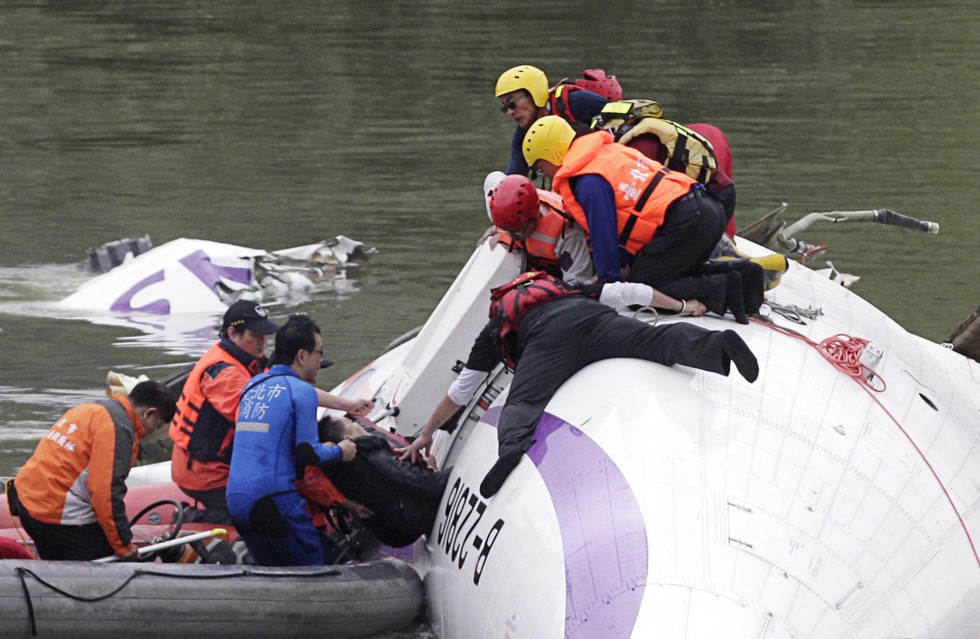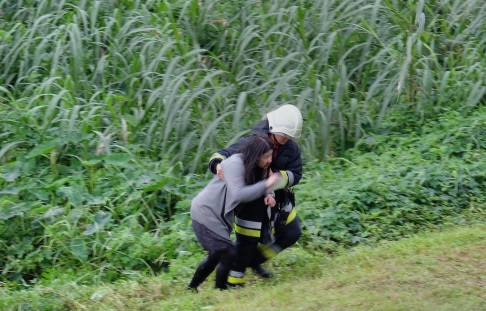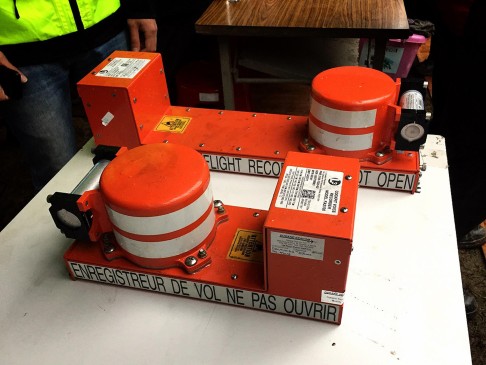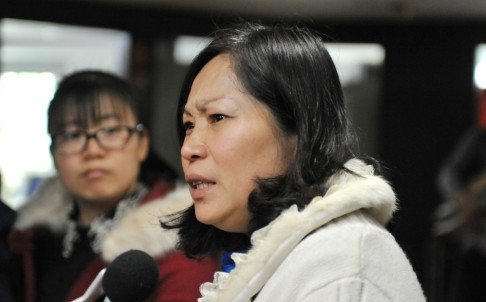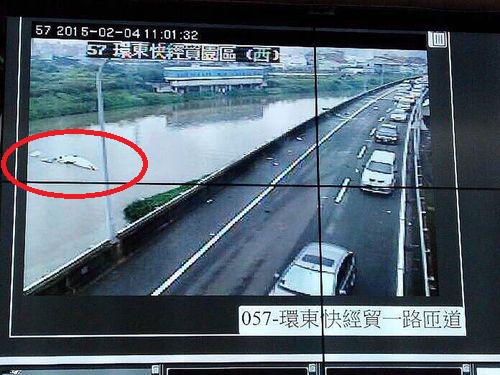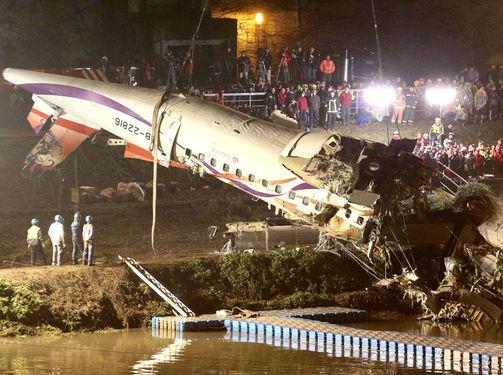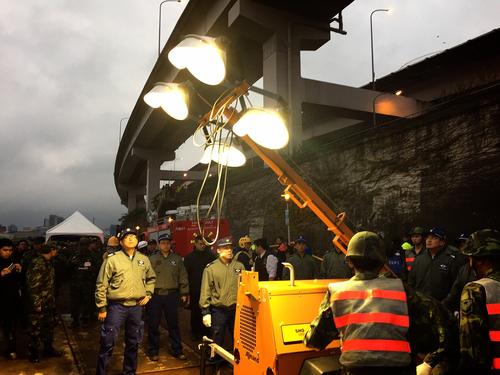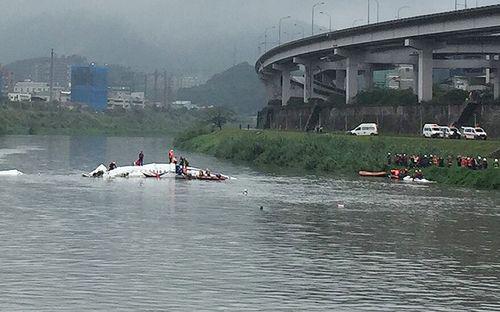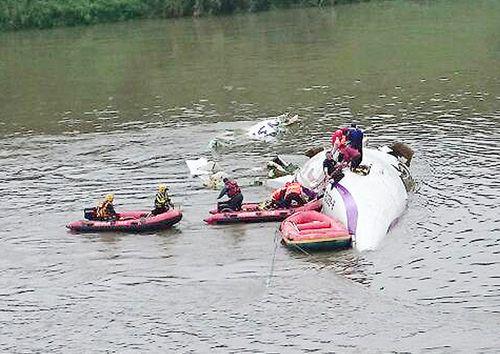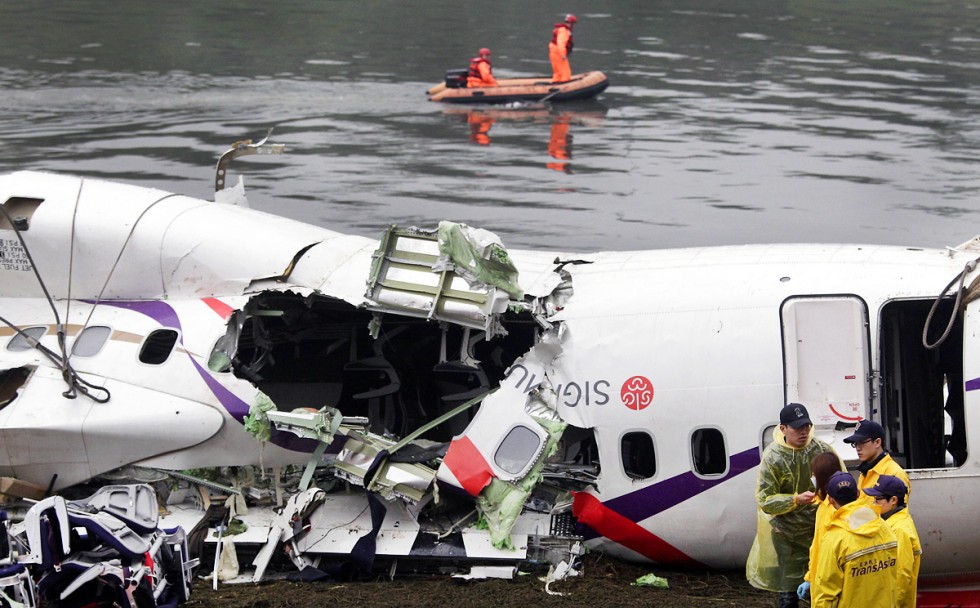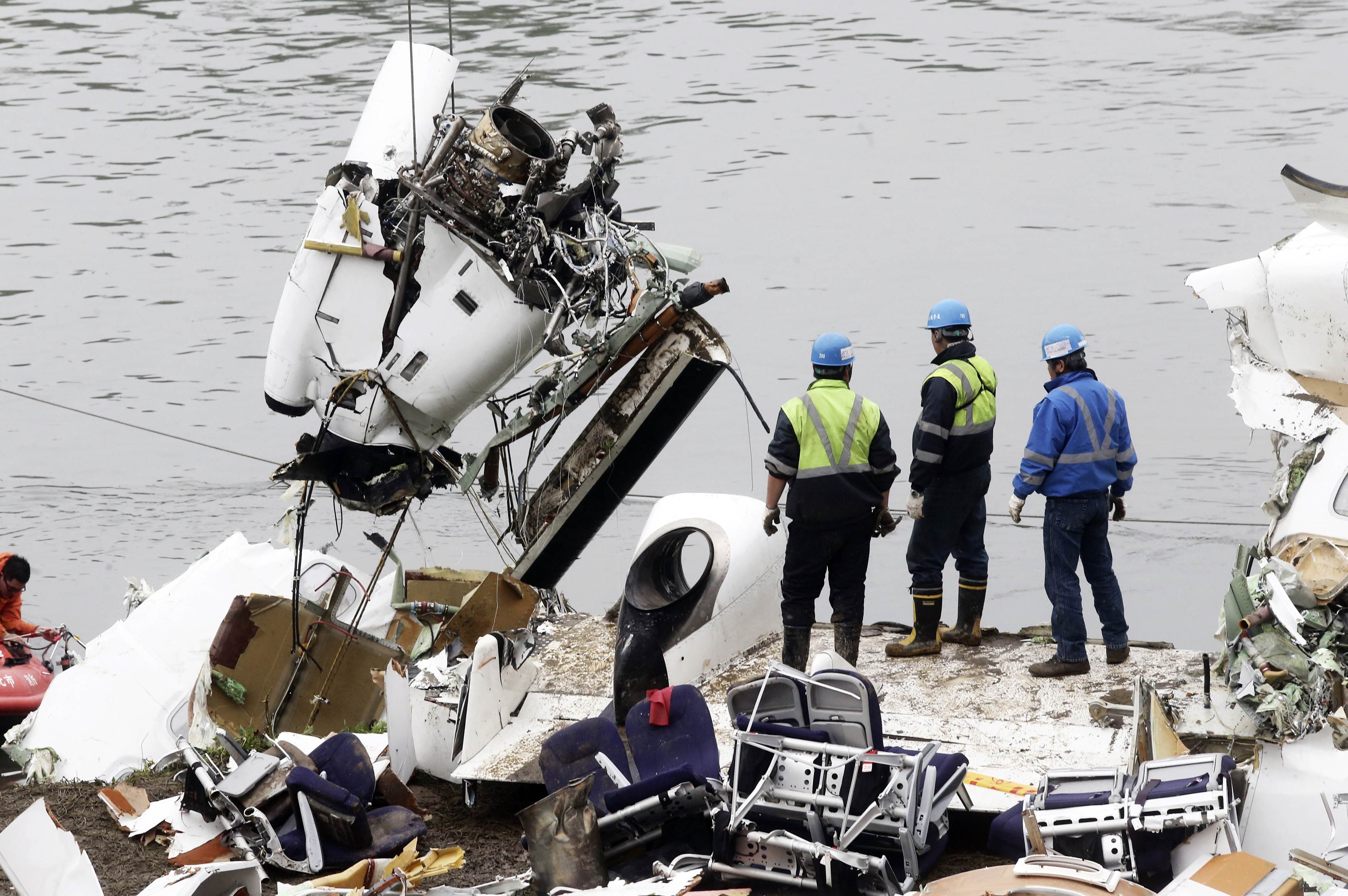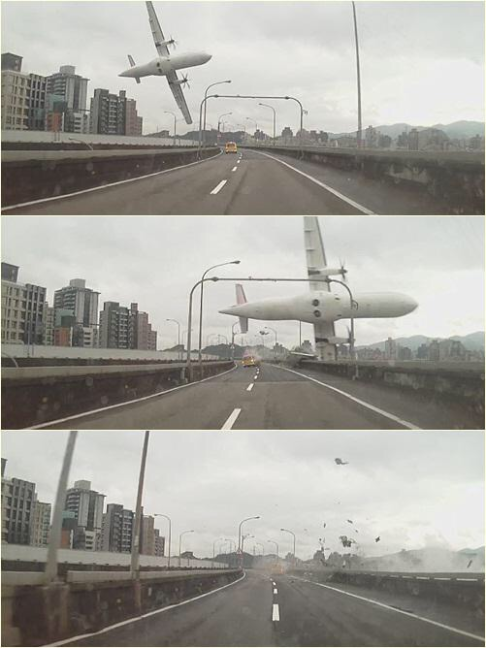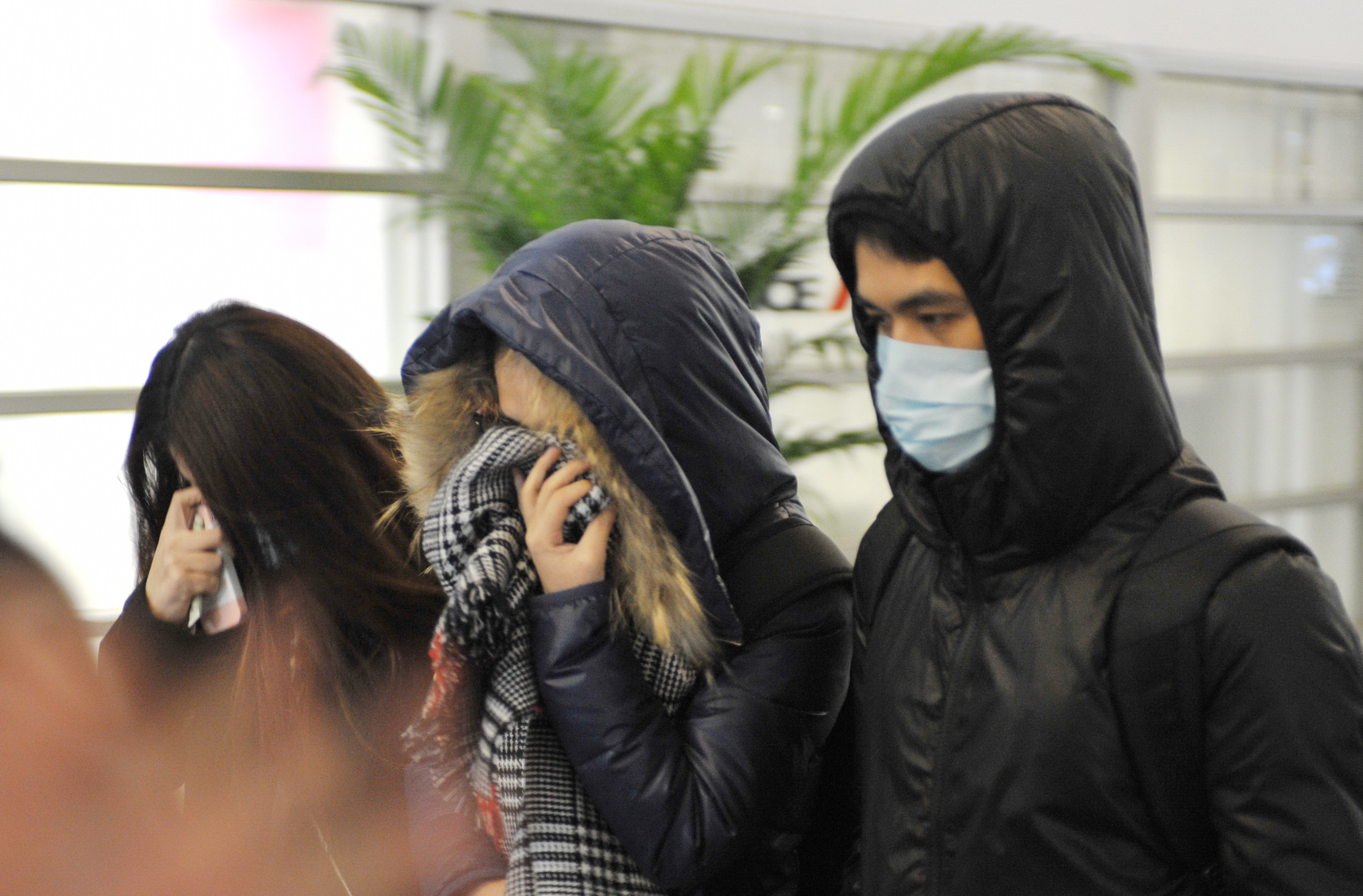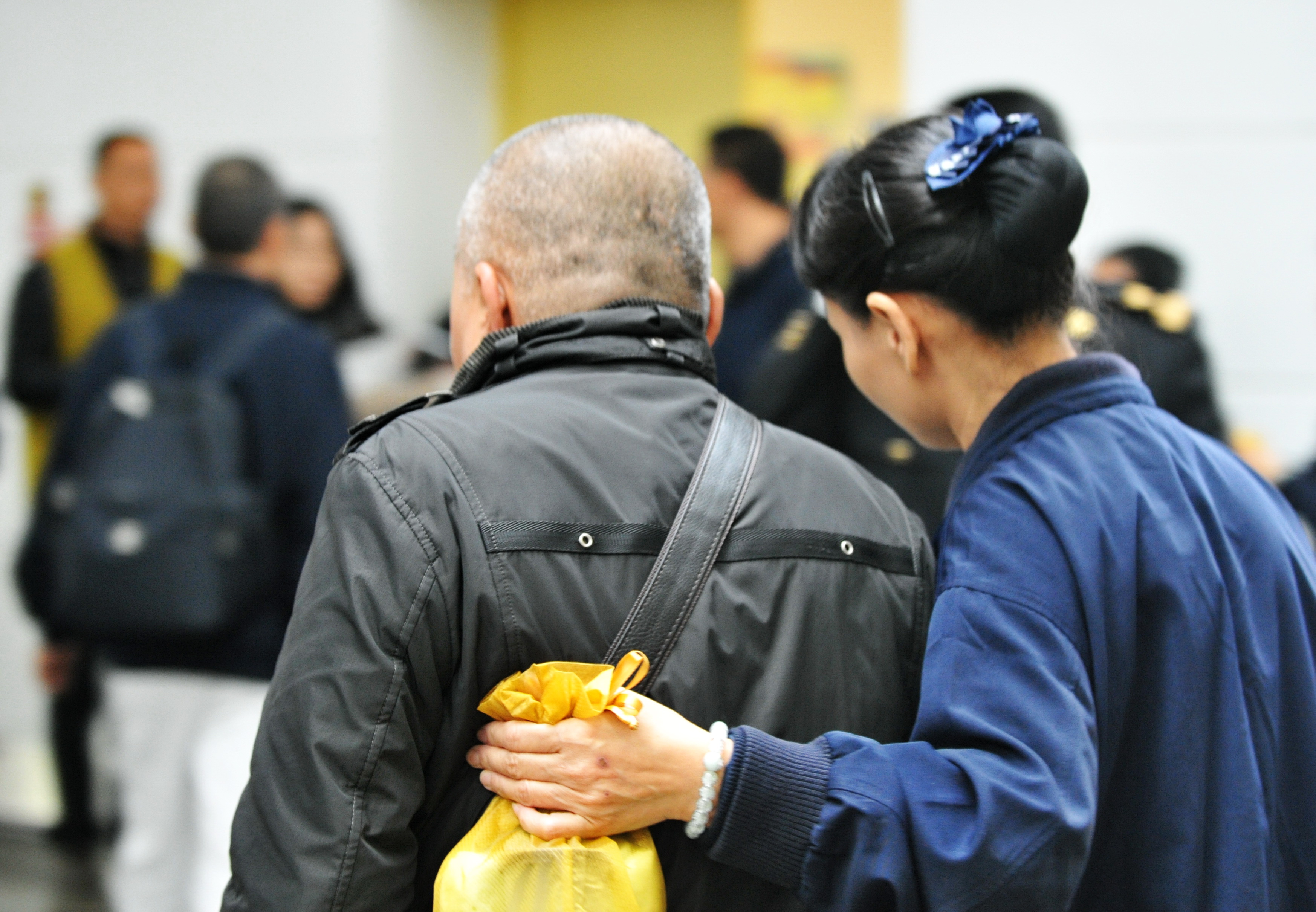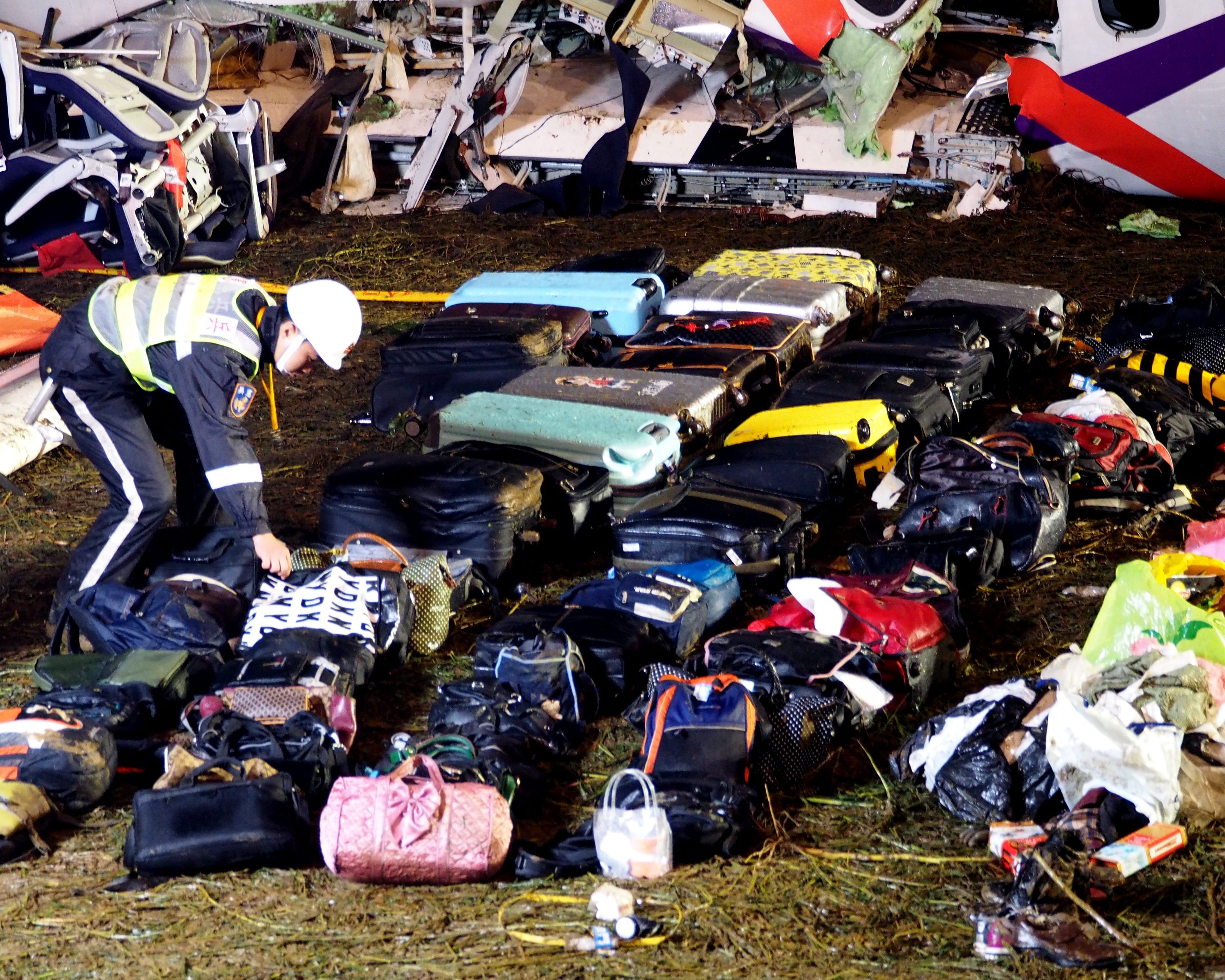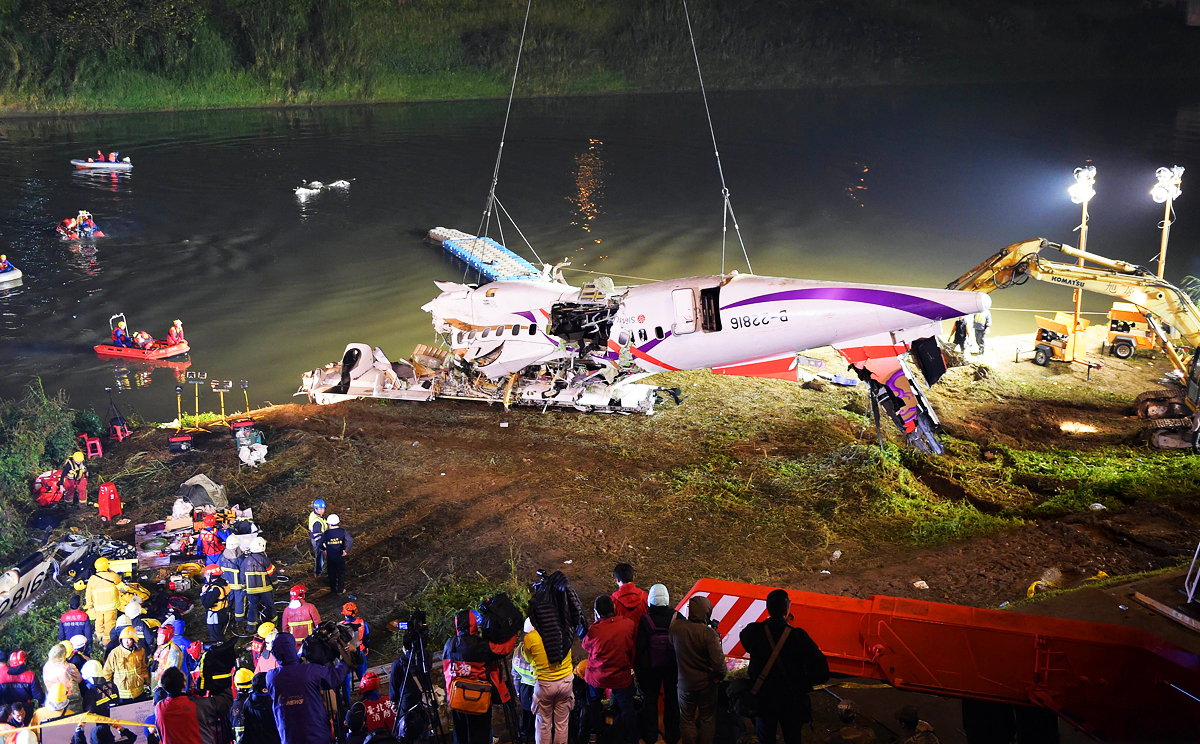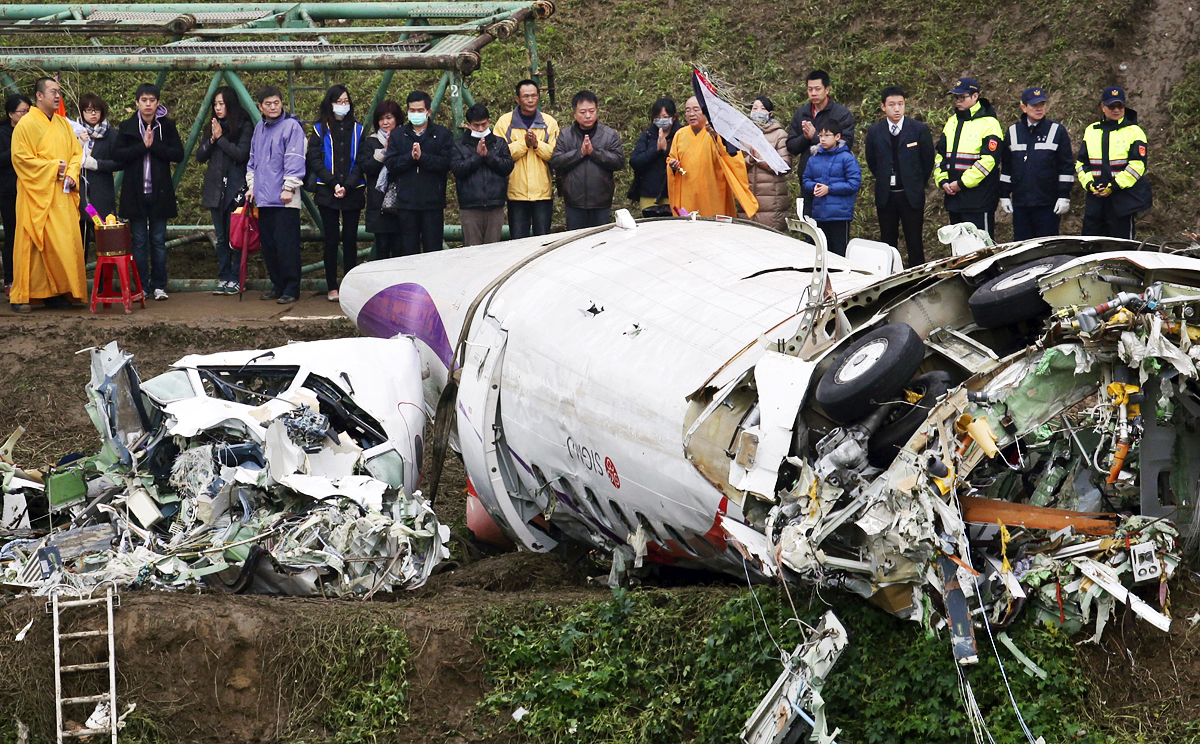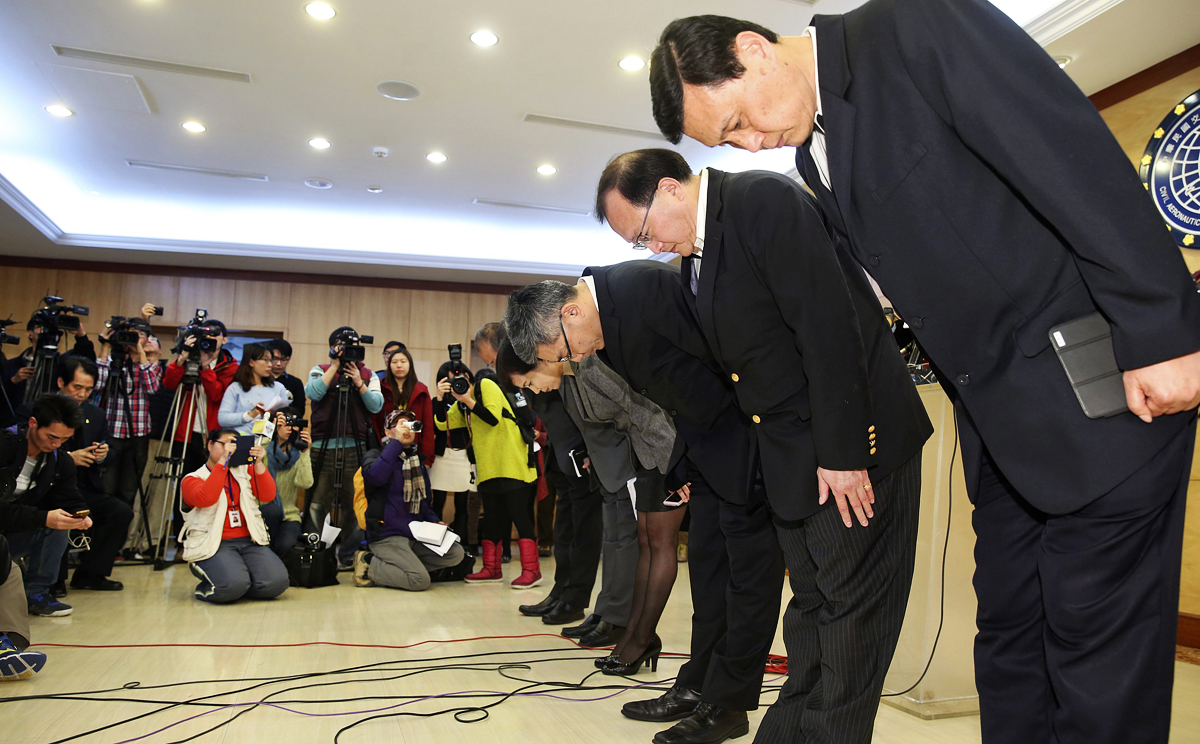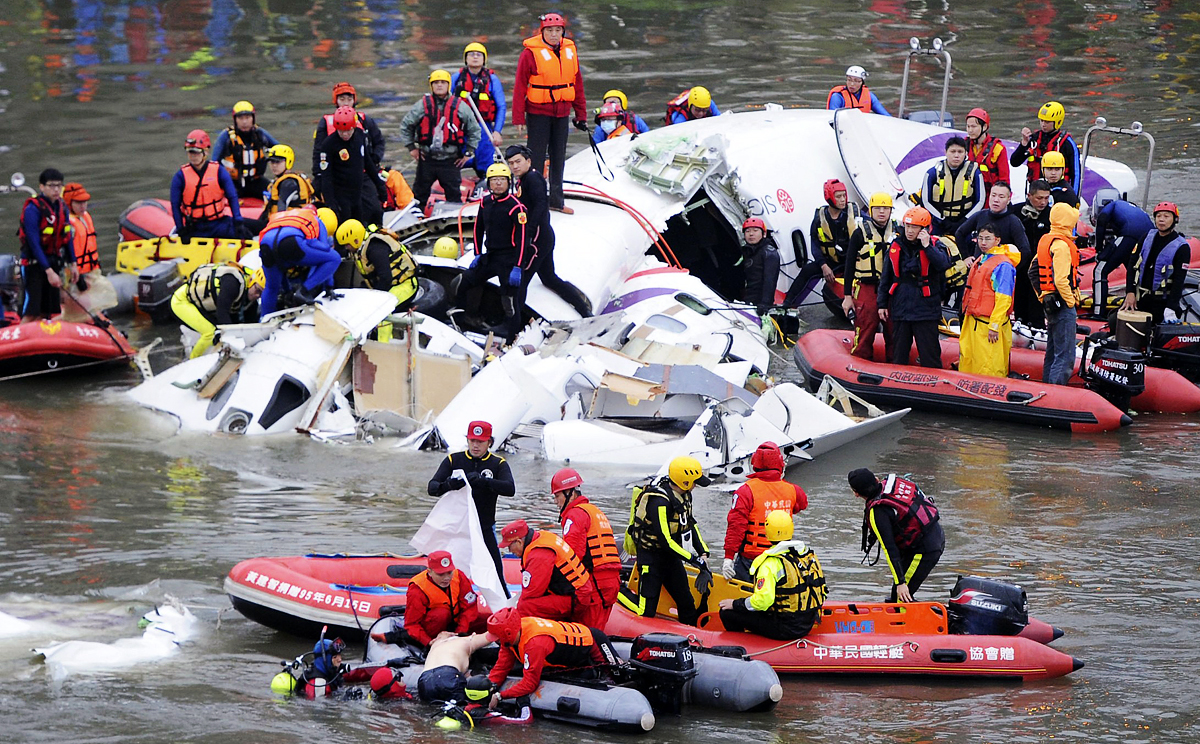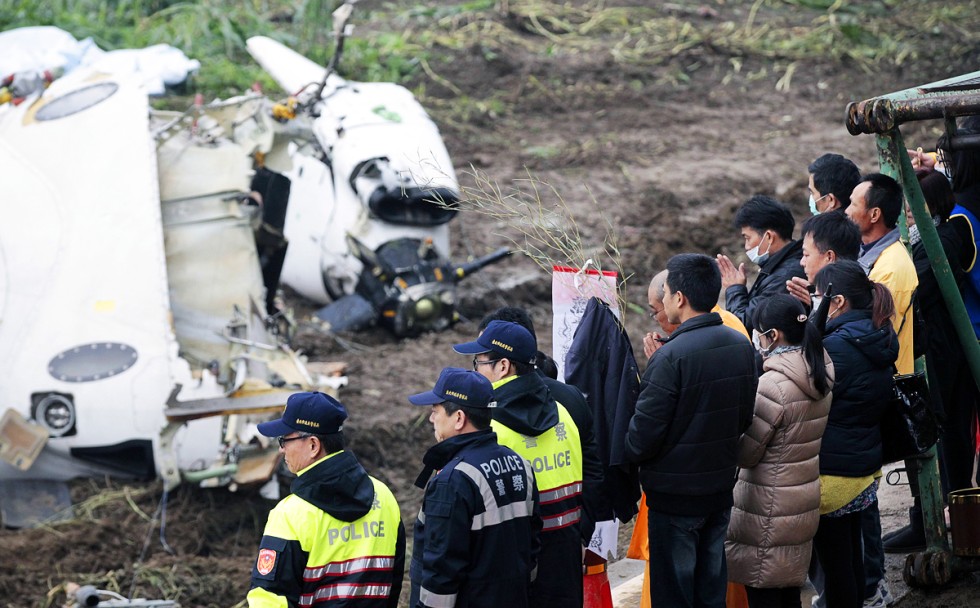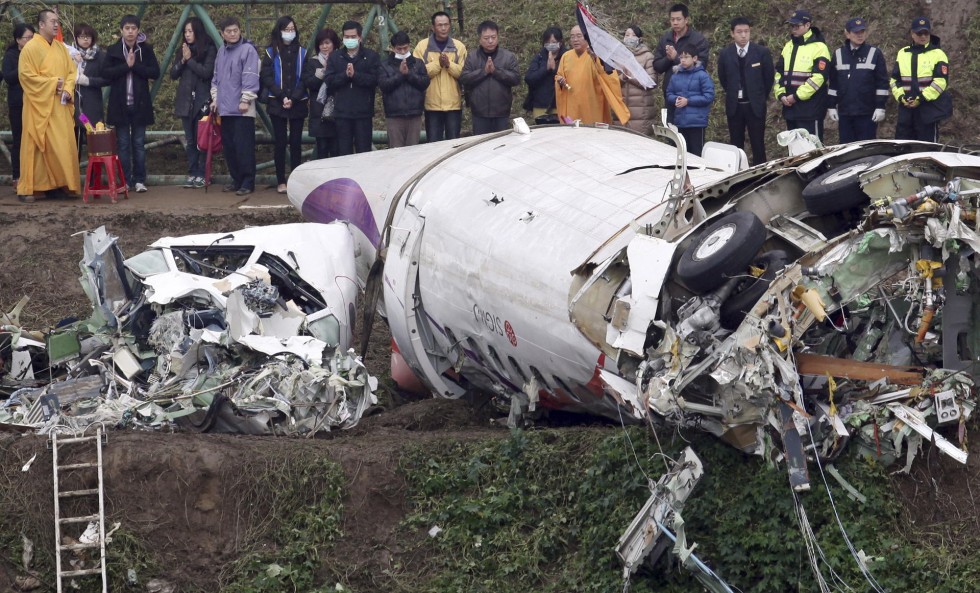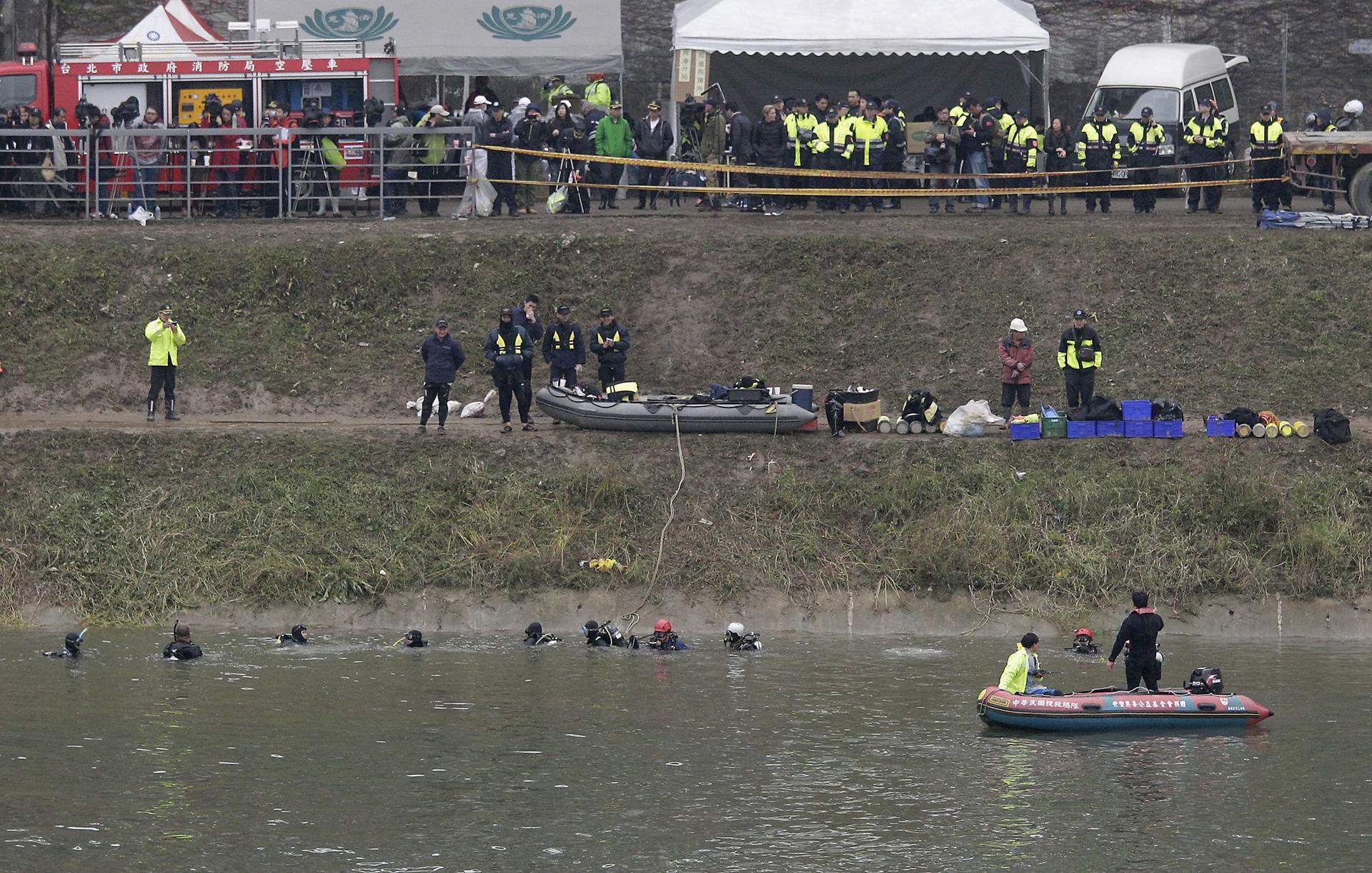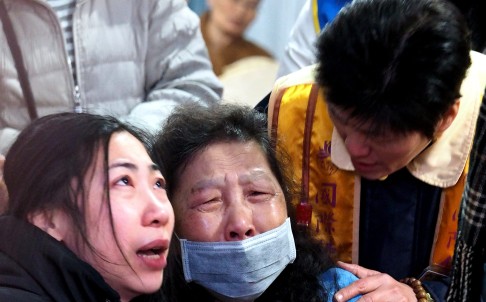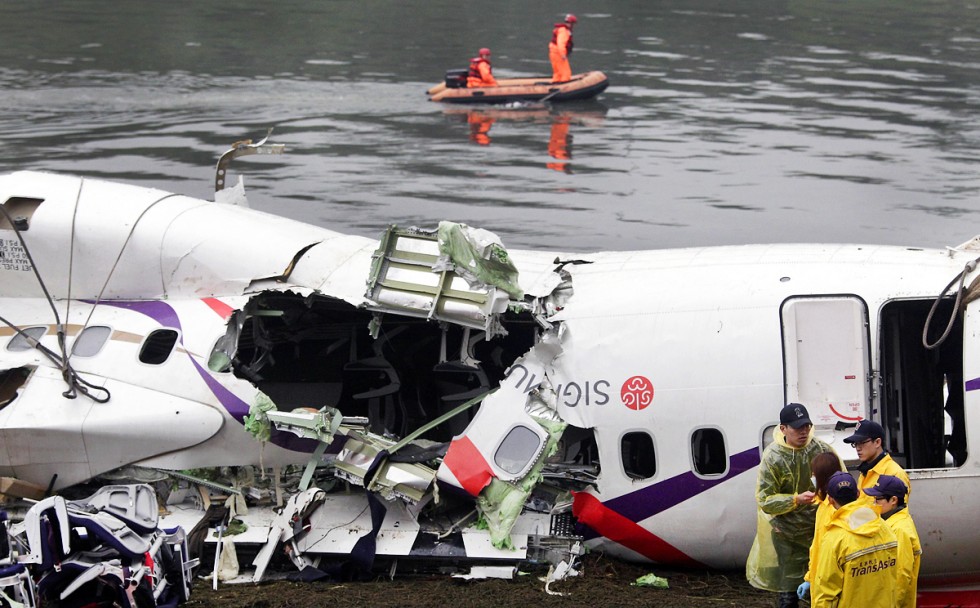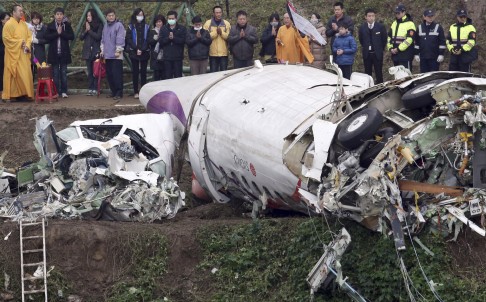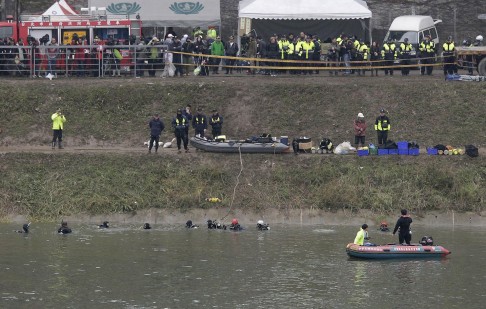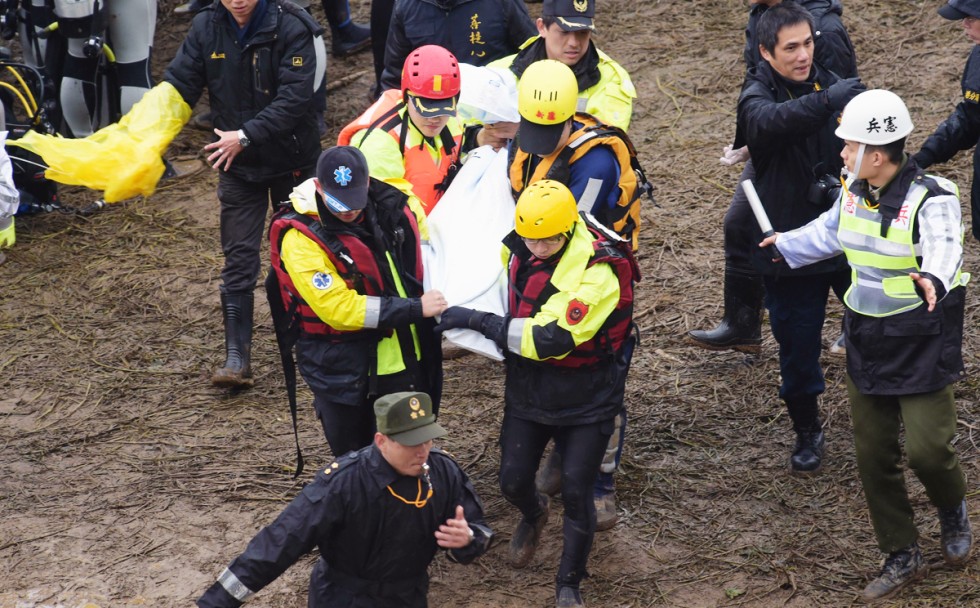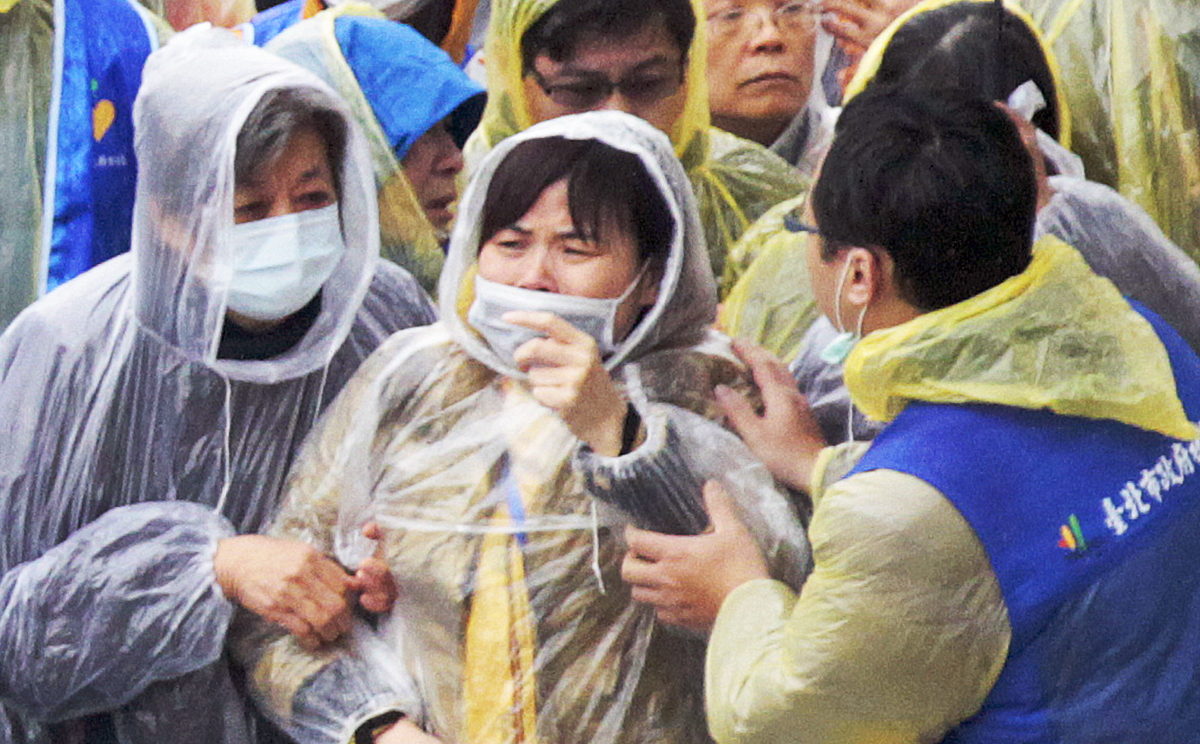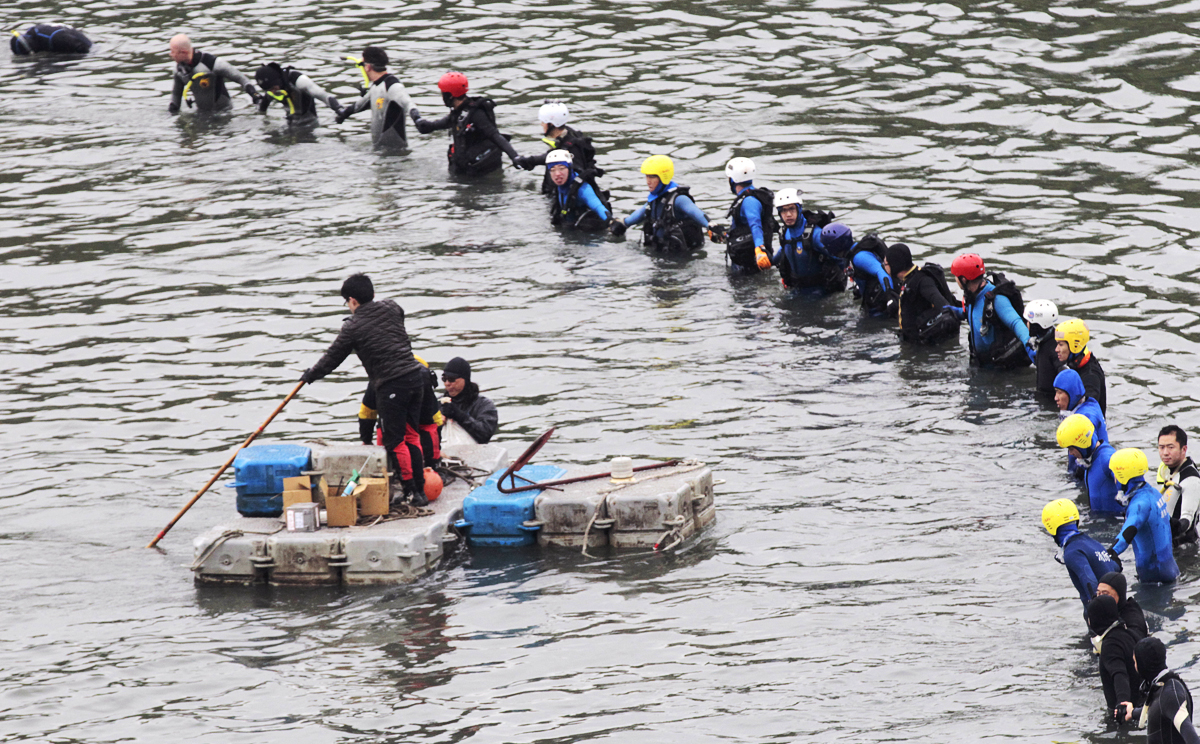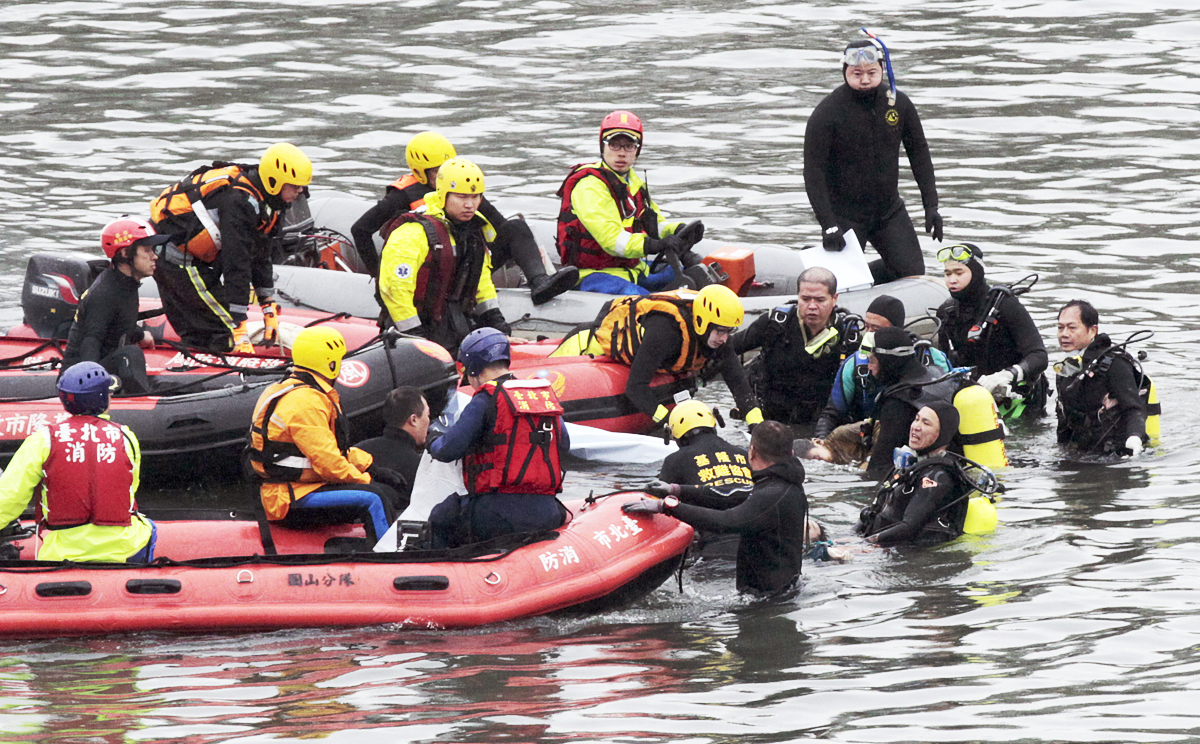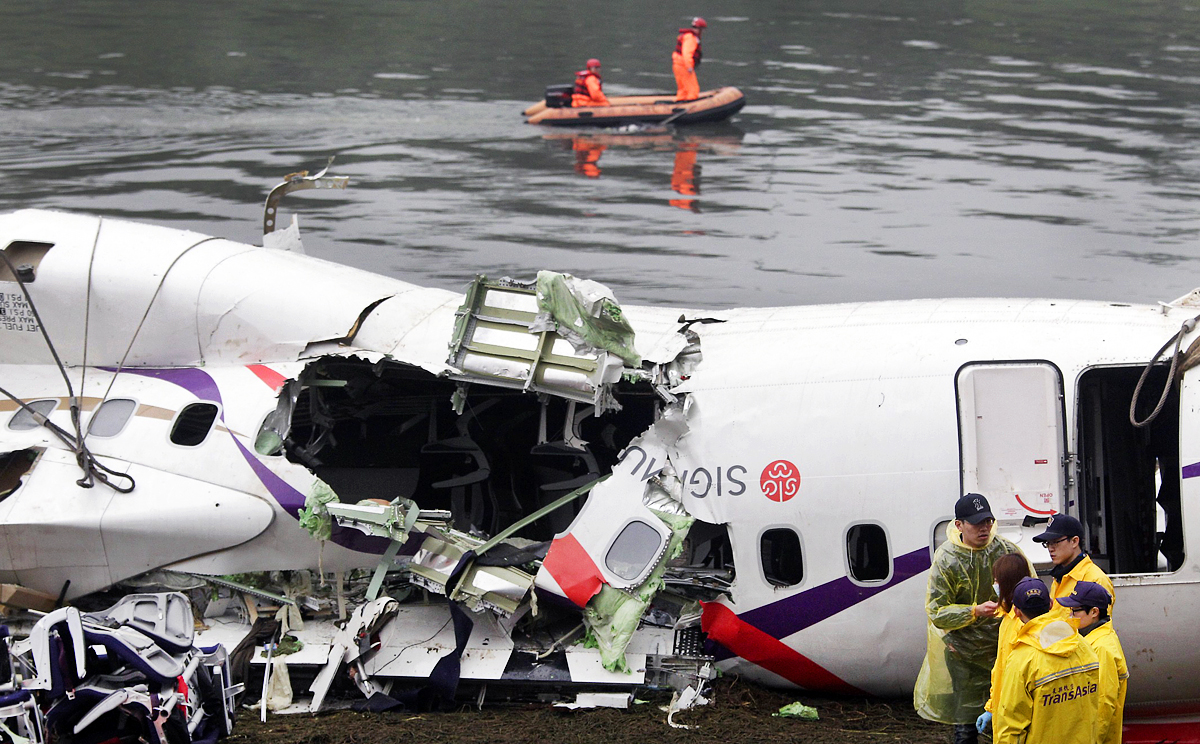TransAsia plane lifted from river; 31 confirmed dead
TransAsia Airways passenger flight clips bridge and taxi before hitting the water; 12 people remain missing
PUBLISHED : Wednesday, 04 February, 2015, 11:55am
UPDATED : Thursday, 05 February, 2015, 1:52am
Lawrence Chung in Taipei [email protected]
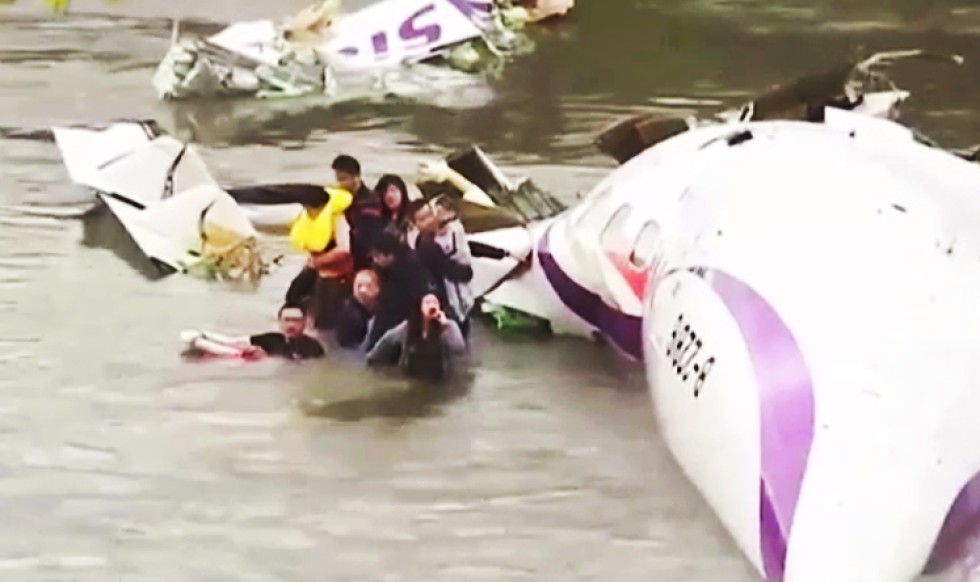
Shocked survivors climb out of the wreckage of the plane after it crashed in Taiwan's Keelung River. Photo: Screengrab
Rescuers continued to search for the missing people from the TransAsia Airways flight that clipped a bridge shortly after take-off and crashed into a river in Taipei yesterday morning, killing at least 31 people.
Using a massive crane, rescuers had last night pulled the three pieces of Flight GE235 from the Keelung River, Taiwan's Central News Agency reported. The fuselage and tail were brought to shore a little after 8pm, and the nose was lifted just after midnight, according to Taipei City Fire Department officials. The bodies of the pilot, co-pilot and a crew member were found in the water shortly later and two other passengers were discovered half a kilometre away in the river.
Twelve people remained missing and 15 survivors were being treated in hospital.
Civil aviation authorities ordered the island’s 22 ATR-72 aircrafts grounded for safety checks, including six owned by TransAsia.
A total of 53 passengers, including four children, and five crew members were on board the ATR 72-600 propeller aircraft when it departed Taipei's Songshan Airport at 10.52am bound for Quemoy.
The air tower lost contact at around 10.53am, Lin Chih-ming, director of the Civil Aeronautics Administration, told a press conference. A dashboard cam inside a car later caught the plane flying on its side as it clipped the bridge, before crashing at 10.56 am.
Six of the 31 mainland passengers aboard were dead, Xinhua reported. Many were from the southeastern city of Xiamen on a six-day tour to Taiwan by way of Quemoy, a former defence outpost of Taiwan.
One Taiwanese passenger was a Hong Kong identity card holder, the Immigration Department confirmed. A spokesman was unable to say whether he was among the survivors.
Liao Chin-hui, head of the Aviation Development Foundation, said the pilot apparently did his best to avoid hitting high-rise buildings, an industrial park and a residential area when he managed to fly along the Keelung River before slightly brushing the elevated highway.
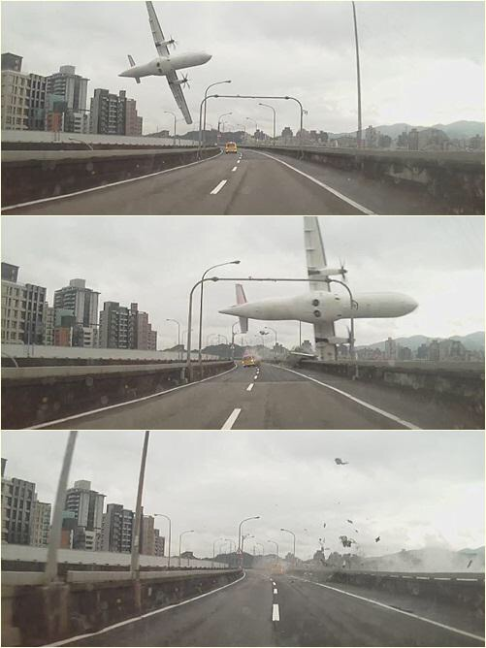
"The way he flew the plane showed that the pilot had tried hard to avoid those structures. He did the best he could," Liao said.
President Xi Jinping called for measures to take care of the affected families, while Premier Li Keqiang urged stepped-up communication between mainland and Taiwan authorities.
The State Council's Taiwan Affairs Office had activated an emergency mechanism, and would dispatch a team to Taiwan.
The Aviation Safety Council said divers had retrieved the black box, "We are still investigating the cause of the accident," said a council official.
The emergency task force set up by authorities in Taipei had sought help from the military to dispatch two amphibious bridging and ferrying systems to aid the rescue work.
Watch: Dozens killed after TransAsia plane crashes in Taiwan
It was the second deadly crash in seven months for TransAsia, with the same plane model crashing into the offshore tourist island of Penghu in July, killing 48 people. The airline's CEO Peter Chen led company officials in making a deep bow of apology to the public and the victims' families.
Video footage showed the plane brushed a taxi on the elevated highway. The trunk of the taxi was smashed with its windshield broken into pieces. Both the driver and a passenger narrowly escaped the impact, and were sent to hospital for treatment of slight injuries.
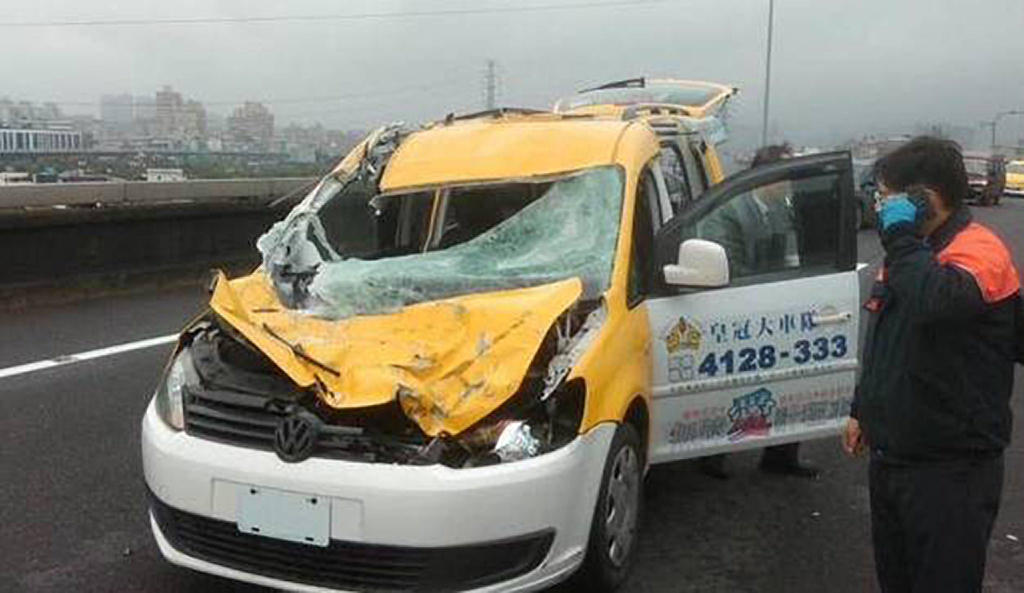
The taxi hit by TransAsia Airways Flight GE235.

